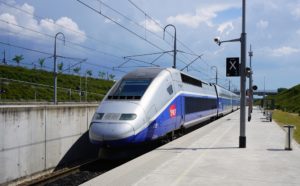Building public and private sector collaboration to help cities during and post Covid-19
COVID-19 has had a huge impact on both the public and private transport sector as travel has plummeted. Throughout March, the UK road network saw 71% less traffic compared to 2019, National Rail traffic was down 95%, and the London Underground 94% and London buses 80% (DfT).
At the same time, the pandemic has called for a pooling of resources on a timeframe and scale that we have not seen since World War II. This call to arms from the public and private sector alike showcases the mutually beneficial outcomes of collaboration, including the pooling of expertise, technological and physical assets, and speed to mobilise. It has also taught valuable lessons, and led to the question of how cities and governments can encourage more collaboration in future.
The transport industry has rallied to provide support to key workers and those in need of aid during the pandemic. The support and services provided vary hugely, including manufacturing equipment, supporting deliveries, providing alternatives to public transport that enable social distancing; these all showcase engagement with different parts and levels of government and public services.
In the UK, Nissan’s Sunderland plant is producing NHS face visors, while Nissan dealers offered to loan more than 100 free cars to NHS workers in need of mobility. In India, Ola has offered its technology platform and capabilities to government and public service organisations to help run various operations at scale during the pandemic free of charge.

Nissan UK are manufacturing PPE for the NHS
Other mobility companies are stepping in to support safe multi-occupancy transit. For example, bus sharing company Zeelo has been partnering with organisations in multiple countries, including Rome’s Busrapido, to offer commuter transport that enables social distancing for companies employing key workers, and will now be offering its technology for free to operators.

Zeelo is enabling safer commuter bus transport
Similarly, standard public transport operators have adapted their offering. In France, SNCF’s TGV trains carried critically ill patients from hospitals in Paris to other regions that had more critical care space. Back in the UK, Sevenoaks bus operator Go2 has brought in emergency demand-responsive buses linking hospitals, key services, and residential areas in a largely rural zone. Lastly, to service the entire nation, the DfT is launching a Transport Support Unit, offering spare transport capacity to help transfer patients and deliver medical supplies to hospitals and food parcels to vulnerable people.

SNCF’s TGV trains carried patients to regions that had more critical care space
Often in public-private collaborations, it is the element of time that is a key inhibiting factor, something which we do not have in a pandemic. The speed of procurement, for example, is long, especially for SMEs and start-ups. The speed at which local authorities operate can also hamper the desired agility the private sector offers, and their own goals. As another example, the time and process required to change Traffic Regulation Orders (TROs) has been prohibitive to those who want to close streets to cars to enable safer walking and cycling while social distancing. The government has made short-term changes to guidance to councils for the pandemic, but how can processes like this be changed for the long term to enable swifter roll-outs of projects?
Milan is one city that is laying out its plans to address lessons learned during the pandemic, including how to help businesses pivot faster in the future and improve public-private working practices. This includes those with factories shifting to producing medical supplies, or businesses switching to deliveries or providing supplies to vulnerable people, which have been largely supported by repurposed logistics vehicles such as those from removal or taxi companies. The public sector needs support from the private sector to operate these schemes, while the private sector needs support and information on to whom they provide the services.
The UK Department for Transport has indicated that its upcoming spending review will now aim to prioritise funding to reflect collaborations during the pandemic, helping to make some current initiatives become permanent.
In the long term, reassessing the way funding is provided to authorities and public sector services is another way to promote better public-private sector partnerships and collaborations. Having a one year funding cycle makes investing and procuring of innovation and new programmes higher risk for the public and private sector alike. A longer view of budgeting for innovation would spread this risk over time. Highways England is one body that has already made changes to its innovation strategy timeframes to reflect this.
Similarly, government innovation funds, a great asset to the UK tech and innovation sector, could be adapted to provide a more holistic approach to funding and projects. Connecting the dots between tech, business models and solutions created, as well as which regions attract projects, will unveil the bigger picture and increase the impact of projects. The Future Transport Zones are an example of funding trials of technologies and business models in particular regions to be scaled up countrywide, such informing updates to e-scooter regulations. However, funding like this and the Towns Fund, which is even more diluted between 100 towns, could be optimised to encourage towns to work together on complementary projects and bids, rather than individual towns bidding to trial everything in competition, the £16million fund set aside to help towns to develop proposals could be used for this purpose, for example.
At AppyWay, we want to enable positive collaborations between the public and private sectors from the kerb up. This includes parking, access for key services, deliveries, and electric vehicle charging, providing data and tools to remove friction to a public sector asset by the public and private sector alike.
Our project with TfL and commercial partners, London FreightLab, is one step to reaching this goal: delivering a real-time kerbside management and booking solution for freight and service vehicles in London, preventing overcrowding at the kerb by increasing demand for deliveries. This is building on the capabilities of our kerbside management tool, Mapper, and the integration of kerbside and parking with mobility services, such as Liftshare’s ridesharing platform.
The public-private collaborations sparked by COVID-19 have shown how impactful bringing together different perspectives and tools can be for society. Let’s not miss the opportunity to encourage these initiatives and ways of working in future.





